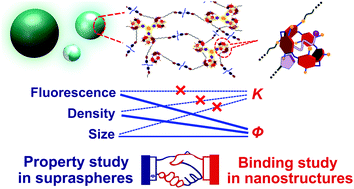Stronger host–guest binding does not necessarily give brighter particles: a case study on polymeric AIEE-tunable and size-tunable supraspheres†
Abstract
Supraspheres were prepared from a pillar[5]arene-based linear polymer (the host) and several multitopic guests. According to host–guest binding studies in nanosystems, the optical and structural properties (fluorescence capability, density, and particle size) of the nanoparticles were correlated not with the host–guest binding affinities, but with the relative fluorescence quantum yield.



 Please wait while we load your content...
Please wait while we load your content...